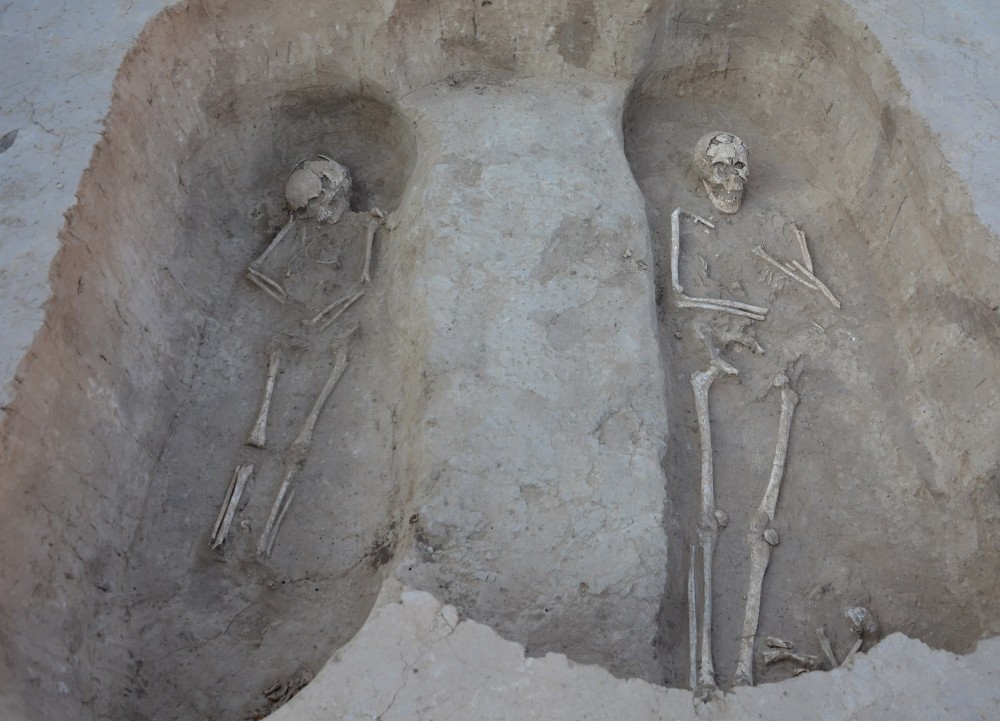
The Late Scythian archaeological complex Chervony Mayak (past name is Bizyukiv monastery) is situated near the eponymous village of Beryslav district in Kherson region. It consists of the hill-fort and burial ground and is the historical and cultural site of national importance (by official ranking). The site is known since the nineteenth century. It was mentioned in the works of prince Myshetsky and N.F. Nogachevsky. The first plan of the hill-fort was taken by the military engineer A.P. Chirkov, and Kherson archaeologist V.I. Goshkevich has made the description and map of the site. The first graves were discovered randomly in nineteenth century in the monastery yard and southward of it. In 1975 the burial ground, known today as Chervony Mayak necropolis, has been discovered northeastward of the hill-fort. It was partly explored in 1976-1977 and during 1986-1988 by Moscow archaeologists Drs. Erast Symonovich and Olga Gei. In total they excavated 108 burials. Since 2011 the burial ground is studied by the Late Scythian expedition of the Institute of Archaeology of NASU headed by Dr. Aleksandr Symonenko. The funerary constructions of Chervony Mayak necropolis are represented by catacombs (crypts) with multiple and single burials (107), niche graves (25) and rectangular or oval pits (35). Among the grave goods there were Roman red-slip fine ware and Scythian hand-made pottery, gold earrings, bronze adornment and personal items (fibulae, bracelets, mirrors), necklaces made of carnelian, jade, amber, and glass beads. Some graves contained the items typical for the Baltic Germanic cultures. Earliest burials of the necropolis were accompanied by the fibulae of Mid-La Tène scheme and can be dated to the late 2nd — 1st centuries BC. The Roman imported goods (red-slip pottery and fibulae) allow us to date the most of graves to the 1st — first half of the 2nd century AD. Several assemblages ought to be dated to the late 2nd — first half of the 3rd century AD.
Source: Symonenko A. (2021) Late Scythian necropolis Chervony Mayak: 10 years of exploration. Journal of Ancient History and Archeology. Vol.8, №1: 69-86
Source web-site: http://jaha.org.ro/index.php/JAHA/article/view/620/417#
Number of views: 1758